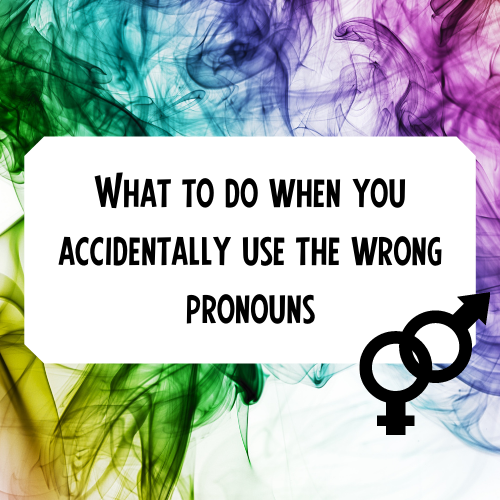What to do when you accidentally use the wrong pronouns

Last week we discussed gender pronouns, and how when someone shares their pronouns with you, you should try your best to remember what they are and use them appropriately. Of course, we’re all human, and sometimes mistakes happen. You may accidentally use “he” or “she” when referring to someone who’s told you they use “they” pronouns, for example. This is also called misgendering someone.
Consider these tips if you make a mistake:
1. When someone shares their pronouns with you, actively listen to what they are. Try to repeat them in your brain in a way that you will remember.
2. If you accidentally use the wrong pronouns when speaking about that person, calmly apologize, correct yourself, and continue speaking.
Do this even if they’re not around. This will help you to remember to use the right pronoun in the future, will help others to remember, and will communicate your allyship (support) to the LGBTQ2S+ community. There is no need to excessively apologize, justify why you made the mistake, or defend yourself. Doing this only centers your own needs and feelings over the persons who has been misgendered.
3. Commit to doing better. On your own time, take time to reflect on why you made that mistake and think about how you can prevent yourself from making it again. This may even involve practicing using pronouns you are less familiar with so you can be more confident using them in a sentence.
The general consensus is that if you misgender someone, it should never be the person who you misgendered’s responsibility to make you feel better about it or to help you do better at respecting their identity. Language can make such a huge impact on mental health and self-esteem, so we should all do what we can to communicate our respect to others with our words and reactions!
Discussion (0)
There are no comments for this doc yet.
Comment posting has been disabled on this doc.